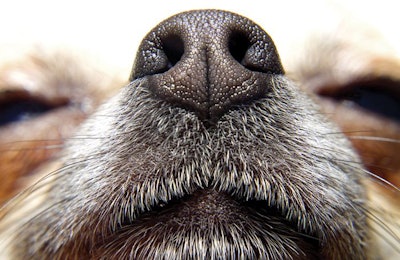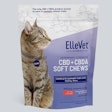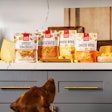
Pet food’s aroma can boost dogs' and cats' observable desire for a food, which then translates into consumer loyalty. Industry professionals will lead a webinar exploring how pet food odors affect owners’ preferences and emotions. They also will discuss how to avoid creating an aroma that may drive pets wild but drives owners from the room.
Webinar: Improving pet food smell to increase brand loyalty
Register to learn how pet food odors are connected with pet owners’ preference and emotions.
October 16, 2018
8:00 a.m. CDT (1:00 p.m. GMT)
Diana Pet Food sponsors this webinar presented by Petfood Industry and WATT Global Media.
Importance of smell to pet food
Pet food palatability, in which smell plays a significant role, has taken on new importance as dog and cat owners increasingly view pets as family. Pet parents want to see dogs and cats obviously enjoying their food, according to Chloé Champion, marketing and communication director for Diana Pet Food, yet people want the pet foods to be healthy too.
“Owners consider meal times a key moment to strengthen the emotional bond with their pets,” Champion told Petfood Industry. “Therefore, food performance no longer simply focuses on pets' preferences, but takes into account a human dimension: the pet owners’ perception of their pet’s enjoyment.
“Pet food manufacturers have a strategic opportunity to develop products which not only meet nutritional requirements and satisfy hunger, but also stimulate an emotional response in pets that is clearly perceptible to the owner,” she said.
The secret to achieving that type of pet food is a holistic approach, backed up by science, Champion said.
Pet food sensory analysis provides competitive advantages
Pet food sensory analysis can give clues about which products will please both pets and their owners, said Kadri Koppel, Ph.D., assistant professor at Kansas State University, during her keynote address at Petfood Innovation Workshop held in Kansas City, Missouri, USA on April 3, 2017.
“Consider sensory testing as one of the ways to figure out what pets and owners really like,” she told Petfood Industry. “I think that will help you along in your market success and your product success.”
Pet food characteristics, pets’ reactions and owners’ observations make up a triangle of influences on whether a pet food succeeds in the market, she said. Smell, texture, taste and other sensations can determine if dogs and cats accept or reject a pet food. Similarly, the sensory characteristics of the pet food and its packaging influence pet owners’ perception of the food.
“A major difficulty in sensory analysis of pet food is that testers need to be trained to be objective,” Koppel said. “It isn’t about human preferences. Panelists need to be trained to describe the characteristics of the pet food, not their subjective reaction to it.”
Once those characteristics have been determined, the results can help pet food companies understand what attributes influence pet preferences for one food or another when tests are conducted with animals.
















